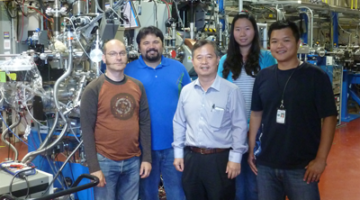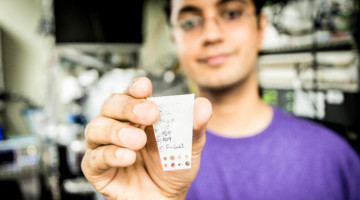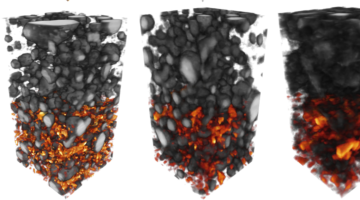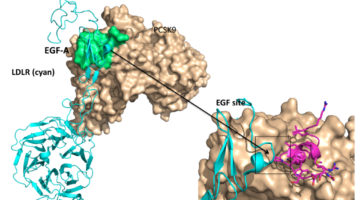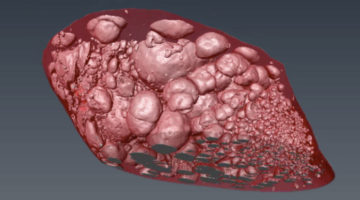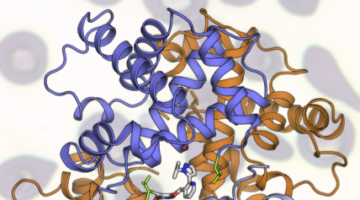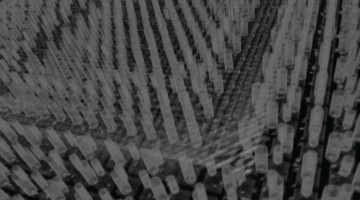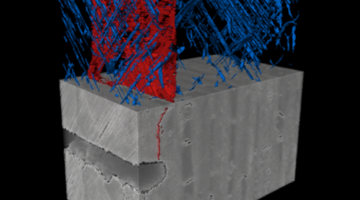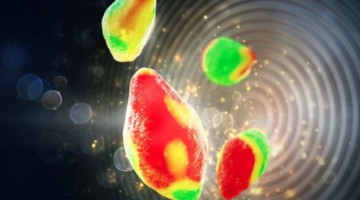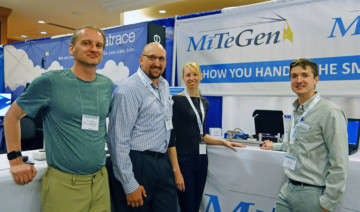At the ALS, industry users find scientific experts and specialized facilities. Their collaboration drives discovery in a variety of fields, yielding results that are greater than the sum of their parts. Read more »
Industry@ALS
Memristor Collaboration between ALS and Hewlett Packard Labs Propels Theory to Application
The development of an idea into a commercial product can take decades, a timeframe that allows contributions from multiple generations of scientists and requires investment in basic research. Collaborative research between the ALS and Hewlett Packard Labs has advanced the memristor, a device that can store information using little to no power. Read more »
TE Connectivity Uses ALS to Improve Conductive Plastics
TE Connectivity used ALS microtomography capabilities to optimize the material and manufacturing parameters of their conductive plastics to impart good electrical conductivity. Conductive plastics with good electrical properties offer processing and cost benefits over metal alternatives, with applications ranging from automotive to data communications. Read more »
Genentech Advances Research Toward Better Medicines to Lower Cholesterol
Genentech has been working in collaboration with the ALS for years with the goal of identifying a better cholesterol treatment mechanism that targets a cholesterol-regulating protein in the body known as PCSK9. Recent advances in understanding PCSK9’s structure have put them closer to that goal. Read more »![]()
PepsiCo Explores Future Food Products at the ALS
Global food and beverage giant PepsiCo has been using ALS tomography beamline 8.3.2 to understand more about the chemical structure and behavior of their starch-based snack foods, with the goal of creating a whole new category of snacks that consumers cook at home in their own microwaves. Read more »![]()
Global Blood Therapeutics Uses ALS to Tackle Sickle Cell Disease
Sickle cell disease (SCD), which affects millions of people worldwide, has traditionally been treated with a cytotoxic drug that has a range of negative side effects and variable patient response. Bay Area biopharmaceutical company Global Blood Therapeutics (GBT) is on a mission to develop a better treatment and is using the ALS to help. Read more »![]()
ALS Gives Intel a Closer Look at Microelectronic Packages
Intel, the world’s largest semiconductor chip maker, has been using the tomography capabilities at the ALS to image their microelectronic packages in 3D at high resolution with short throughput time, providing valuable information for both failure analysis and product development and proving that synchrotrons are an insightful tool for this type of imaging. Read more »![]()
GE Aviation Delves into Advanced Materials at the ALS
Developing ceramic matrix composites (CMCs) to replace the metal alloys traditionally used in jet engines has been a goal for the aviation industry for decades. For more than a year, GE Aviation has used the tomography capabilities at ALS Beamline 8.3.2 to gain insight into their CMC materials, guiding their engineering and design efforts. Read more »![]()
Industrial-Academic Collaboration Gives Nanoscale Insight into Batteries
An industrial collaboration between Hummingbird Scientific and a team of researchers from the ALS, SLAC, Berkeley Lab, Stanford University, and other institutions has resulted in a new x-ray microscopy platform that gives scientists the ability to image nanoscale changes inside lithium-ion battery particles in real time as they charge and discharge. Insights obtained from the imaging platform have already provided surprising new insights and could help researchers improve batteries for electric vehicles as well as smart phones, laptops, and other devices. Read more »![]()
ALS Beamstop Device an R&D 100 Finalist
A beamstop device recently developed at the ALS has successfully combined two essential crystallographic functions–capturing the damaging portion of the beam while simultaneously monitoring its intensity–into a single miniaturized package. The technology has been licensed and launched commercially and is also a finalist for an R&D 100 Award. Read more »![]()
